Britain at War 1939 – 1945
The British government mobilised civilians more effectively than any other combatant nation.
By 1944 a third of the civilian population were engaged in war work, including over 7,000,000 women.

“Come Into the factories” War Poster
Minister of Labour Ernest Bevin was responsible for Britain’s manpower resources. He introduced the Essential Work Order (EWO) which became law in March 1941.
The EWO tied workers to jobs considered essential for the war effort and prevented employers from sacking workers without permission from the Ministry of Labour.
Bevin was also responsible for overhauling the reserved occupations scheme that gave groups of skilled workers in certain occupations exemption from military service.
From early 1941, it became compulsory for women aged between 18 and 60 to register for war work.
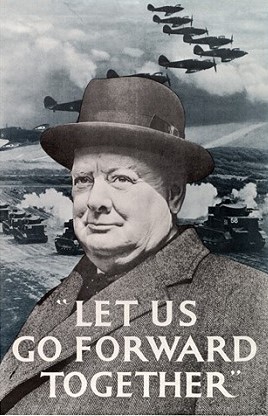
Winston Churchill “Let Us Go Forward Together” Poster
Conscription of women began in December, unmarried ‘mobile’ women between the ages of 20 and 30 were called up and given a choice between joining the services or working in industry.
Pregnant women, those who had a child under the age of 14 or women with heavy domestic responsibilities could not be made to do war work, but they could volunteer. ‘Immobile’ women, who had a husband at home or were married to a serviceman, were directed into local war work.
As well as men and women carrying out paid war work in Britain’s factories, there were also thousands of part-time volunteer workers contributing to the war effort on top of their every day domestic responsibilities. Other vital war work was carried out on the land and on Britain’s transport network.
For five years the British had to endure the bombing of their towns and cities in the Blitz, as well as attacks from flying bombs and rockets. In all 60,595 civilians were killed and 86,182 seriously injured.
Rationing of food began in January 1940 and clothes in June 1941.
By 1943, virtually every household item was either in short supply and had to be queued for, or was unobtainable.
VE Day found Britain exhausted, drab and in poor shape, but justly proud of its unique role in gaining the Allied victory.
How did the WW2 affect Dowty?
During the Second World War Dowty’s inventive and creative engineer’s mind was fully unleashed.
When war was declared on the 3rd September 1939, the company was ready with a team of designers, highly efficient production facilities and a vast network of subcontractors all over the country.
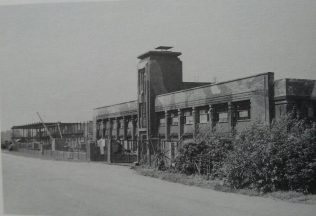
Rotol – Photo of Rotol Building in WW2 with camouflage
Dowty Equipment became the company’s new name in 1940.
There were nearly 3000 employees working for Dowty and fifty per cent were women, backed up by many thousands more working at 250 sub-contractors dispersed all over England, Canada and USA.
During the war, nearly all British aircraft that were built embodied Dowty products, which included hydraulic systems, undercarriage units, tail wheels, electrical instruments and warning devices .
The list of aircraft names include Hawker Hurricane, Beaufighter, Typhoon, Whirlwind, Manchester, Lancaster, Halifax, Stirling, Blenheim, Hampden, Henley, Sunderland, Skua, Anson, Dominie, Master, Lysander, Rapide.
Dowty equipment was also fitted to the allies’ first jet aircraft the Gloster Whittle E28/39, which first flew on the 15th of May 1941, also, the first jet fighter to see action, the Gloster Meteor.
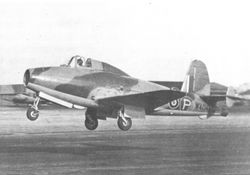
Meteor E28/39
At the end of the hostilities in 1945, Dowty had built 87,786 landing gears and 984,388 hydraulic units.
Plants were set up throughout Britain and in Canada and the USA.
Dowty Employees in War Service
In order to indicate that a person was engaged on important war-work, small metal lapel pin badges were worn by civilians.

Rotol Airscrews
Several of these badges were officially produced and distributed nationally but many more were produced privately by employing companies to support their employees.

Rotol War Service Badge – WINS (Women In National Service)
The photos show the badges worn by Dowty and Rotol employees.

Dowty War Service Badge
Dowty’s Private Army
Dowty Equipment Ltd, Arle Court had its own Home Guard Company and belonged to the 1st Battalion (Cheltenham), HQ Lypiatt Terrace and were known as “K” Company – Dowty Equipment Ltd, Arle Court
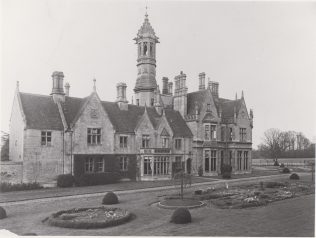
Arle Court House – showing the original ornate main tower turret, apparently it proved a wonderful observation post for Arle Court’s ‘private army’ as the local home guard was known, and even a Lewis gun was mounted there”
Rotol Airscrews, Staverton also had its own Home Guard Company and they belonged to 19th Battalion (Churchdown), HQ Churchdown and were known as “B” Company – Rotol Airscrews Ltd, Gloucester
The Home Guard (initially Local Defence Volunteers or LDV) was a defence organisation of the British Army during the Second World War.
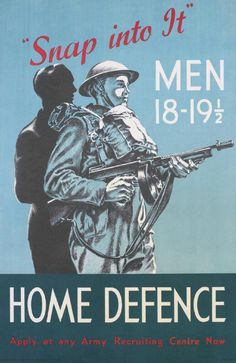
Home Defence Poster
It was unpaid but gave a chance for older or inexperienced soldiers to support the war effort.

King George VI recognition of service by Kenneth Mills in Home Guard 1940-44
There were 19 battalions of Home Guard units in the Gloucestershire area in the Second World War and they wore the Glosters badge (27,000 men and women)

WW2 Home Guard Regiment Badge
The two pictures show Dowty Home Guard ‘K’ Company during wartime and at a reunion in the 1980’s

The Dowty Private Army – WW2 Home Guard Regiment

Field Marshall Lord Marshall inspects the Dowty Home Guard

The Dowty Private Army – WW2 Home Guard Regiment
Armistice Day is on 11th November and is also known as Remembrance Day.
It marks the day World War One ended, at 11am on the 11th day of the 11th month, in 1918.
A two-minute silence is held at 11am to remember the people who have died in wars.
There is also a Remembrance Sunday every year, which falls on the second Sunday in November.
We all know about the horrible sacrifices of our fighting forces and of the veterans who served on the frontline but we should also remember those who contributed in the factories and elsewhere, they too played a vital role in winning the war.

Field of poppies at sundown
We shall remember them





No Comments
Add a comment about this page